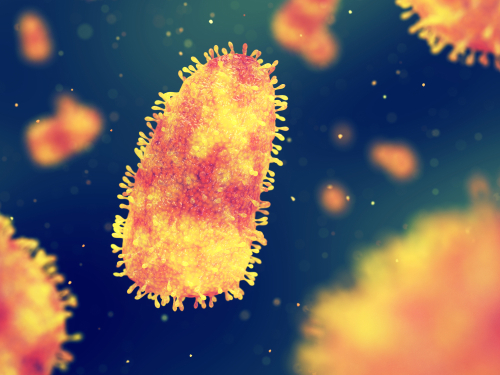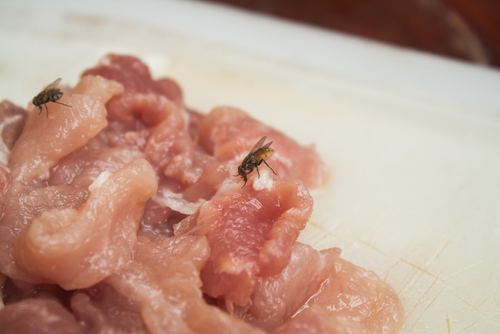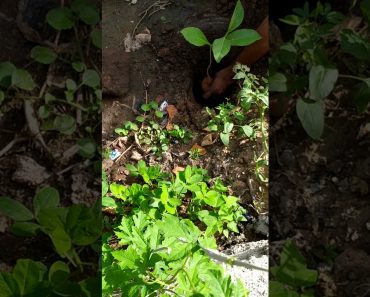As a prepper or homesteader, meat hygiene is a task that shouldn’t be handled lightly, or worse, entirely overlooked.
Butchering meat on the homestead should be treated as seriously as any of the other life-sustaining tasks you are taking care of.
Regardless if you are butchering a wild or domestic animal, it is important to know how to establish if the meat is edible or not. There’s no room for cheating here, and nothing should be overlooked just for the sake of not wasting a good food source.
Beginning with the live animal, to the warm carcass, and on till the product is to be cooked, this is a valuable perishable food product. There are certain health hazards that you can eliminate from your diet if you know what to look for when butchering animals.
As a first precaution, we should acknowledge that many diseases can be transmitted from animals to humans at the time of butchering or when the meat is eaten without having been properly inspected.
There is a constant need to stress that proper sanitation is of the utmost importance when butchering the animal to avoid the contamination of edible meat. You need a clean, dust-free area with plenty of pure water available when slaughtering the animal.
Carefully observing the animal
As a general rule, one should first observe the animal before killing it since this will make sure the soon to become a food animal is healthy. You should carefully check the animal at rest and in motion.
When the animal is resting, it should breathe easily, and it should have no unusual swellings, the eyes should be clear, the skin should be supple with a good shiny coat, and there should be no discharges from any orifice.
When the animal is moving, it should move freely without stiffness or limp in a normal coordinated manner. If you are dealing with a domestic animal, you can restrain said animal and take its temperature using a rectal thermometer. It is recommended to take a morning temperature since it’s more accurate; therefore, it has more meaning.
An animal presenting a fever shouldn’t be butchered before establishing what is causing the elevated body temperature. Also, keep in mind that excitement can raise the body temperature of the animal by one degree Fahrenheit and this margin is acceptable.
It goes without saying that any animal appearing ill or abnormal in any way should not be butchered. Always slaughter and eat only the animals that are healthy.
The normal body temperature
Here are the normal body temperatures of various farm animals. You can always check online about the body temperature an animal should have, depending on the type of animal you are dealing with.
- Chickens – 107.5
- Turkeys – 106
- Pigs – 102
- Sheep – 103
- Goats – 104
- Rabbits – 102.5
- Cattle – 101.5
Diseases you can spot before consuming the meat
There are two main diseases that are particularly dangerous, and you should watch for in the antemortem (before death) inspection. These diseases are rabies and anthrax, and they are especially contagious and often fatal to those handling the animal, its byproduct, secretions, or excretions.
Rabies
In general, an animal with rabies shows nervousness, aggressive behavior, general irritability, spasms, convulsions, or a characteristic mincing gate. In the early stages of the disease, the animal may be more friendly and affectionate than normal. A friendly wild animal should raise some flags, and you need to be careful when interacting with it.
In the later stages of the disease, profuse slobbering can be noticed as the animal can’t swallow its saliva. The animal will quickly become dehydrated and will show fear of water (hydrophobia) since it cannot swallow it.
This disease can easily spread to the handler of the animal or its surroundings via its saliva, which contains the virus. The virus usually enters the person’s body through small, even unnoticed breaks in the skin or possibly through the mucous membranes of the eyes, nose, mouth, etc.
Any animal suspected of having rabies under survival conditions should be killed and avoided at all costs. Do not touch the animal or its surroundings since you can catch the virus without even realizing it.
Anthrax
The symptoms to watch for with anthrax in ruminants (cattle, sheep, deer, etc.) are trembling, staggering, difficulty in breathing, and bloody feces, urine, or saliva. This disease can be contracted by just handling the animal, its parts, secretions, or excretions.
If anthrax is suspected, the carcass should be buried deep with hot commercial lye, the litter and wastes burned, and the area soaked in a five-percent solution of lye (2.5 lbs lye in 5.5 gallons hot water).
Protect the person applying it with rubber gloves, boots, heavy clothing, and goggles. Keep vinegar (a week acid) at hand in case the person applying it comes in direct contact with the lye.
Other issues
If you are certain that the animal doesn’t have rabies or anthrax, but it still appears ill, things may not be lost yet. If the animal is ill in any other way besides the above-mentioned illnesses, it should be isolated and treated until it recovers.
The animal must be completely normal for at least two weeks, with a long time better, before slaughtering is acceptable. This is mostly a general precaution, and we can assume that the meat is edible after 2 or 3 weeks. However, you may want to consult a veterinarian and have him or her inspects the animal before moving to the slaughtering phase. It’s always best to have a second opinion.
When you have your healthy normal animal, it should be killed in a quick, humane manner to avoid excitement and the buildup of toxins in the meat.
Necessary postmortem inspection
When the animal is butchered, a postmortem inspection is required. In time, most of the healthy animals you will butcher will be completely normal. These are perfect opportunities for paying close attention to what these normal tissues and organs look and feel like. By doing so, you will recognize an abnormality when you see or feel it in an unhealthy animal.
Keep the slaughtering area and the equipment you are using clean at all times to avoid contaminating the edible parts of the animal. Good lighting in the area is mandatory to maintain cleanliness. The gastrointestinal tract (guts) must be removed from the carcass without any of its contents coming in contact with the carcass meat. This is also true with respect to the edible parts of the gastrointestinal tract.
You need to pay attention when removing the liver, pancreas, tripe, intestines for castings, etc. Great care is needed to avoid contamination. All these animal parts should be clean thoroughly until the rinse water is clear. Have clean containers ready for the edible parts. As a general rule, you should use many small containers instead of larger ones since there’s less chance of cross-contamination.
The butchering stage
When butchering an animal, all the parts should be inspected for any possible abnormalities. You need to pay particular attention to lymph nodes and glandular tissues since these can help you decide if the whole carcass needs to be disposed of or just the affected parts.
Look for abscesses
Abscesses (pus pockets) may vary in size and form. These can be too small to see, or they can be as large as a basketball. If a single or couple of isolated abscesses are found, the organ or area involved can be condemned and destroyed. The rest of the meat should be edible as long as it’s normal. If there are multiple abscesses present in various organs, you have to destroy the entire carcass.
For instance, if you find a couple of abscesses in the head or liver, destroy the entire head or liver and use the rest of the carcass. On the other hand, If you find abscesses in, say, the liver and lymph nodes of the head, destroy the whole carcass.
Another good example is finding an abscess in the auxiliary (armpit) lymph node and finding an infection somewhere in that limb. Then only that leg must be discarded. However, if several lymph nodes spread over the body are involved with abscesses or are swollen (enlarged), the whole carcass must be destroyed.
Look for cysts
Another thing to watch for is fluid-filled cysts that can vary in size from a few millimeters to several inches in diameter. These are the infective form of various tapeworms and are generally found in the muscles of the body.
Look closely at the most active muscles of the body. These are the diaphragm (muscle separating the thorax [chest] and abdomen [stomach]), heart, and tongue, where these parasites are frequently found.
If cysts are present in the muscles, the entire carcass is unfit for food. If they are found only in the abdominal viscera (guts), then these can easily be removed from the carcass, and the viscera destroyed, while the rest of the carcass can be used for food.
Prevent scavengers like dogs or other carnivores to eat these diseased parts since they can spread some of these parasites to man through their fecal contamination. If many lymph nodes are enlarged, the animal may have lymphosarcoma (cancer), tularemia (a bacterial infection), or some other lymph node involvement. The entire carcass needs to be destroyed.
As you examine the tissues and organs, make sure you cut them several times and have the cut interior surfaces examined as well, since the abnormality may be totally internal and not seen from the outer surface.
Look for a change in color or aspect
An experienced butcher can tell you that a change in the color or aspect of the meat represents signs that can tell you if the meat is edible or not.
For example, when you are examining the liver, the hard, fibrous ducts should be cut to see if there are any parasites in them. If that’s the case, the entire liver should be destroyed.
If the whole carcass has a yellowish color (icteric), especially the white tissues, the whole carcass should be condemned.
Also, make sure you cut into the lung tissues to see if there is any pus present in the bronchi or bronchioles (air tubes) within the lung. Once again, if that’s the case, the lungs are not edible and should be discarded. Even more, if there are signs of systemic infection, the entire carcass must be destroyed.
Signs of systemic infection to look for are changes in the appearance of several tissues or organs. These can be multiple swollen lymph nodes, tissues redder in color than they should be, small abscesses in various tissues or organs, some tissues may be congested with blood appearing almost purple, or any other multiple abnormalities. Under these conditions, the whole carcass should be destroyed.
In some cases, you may find worms in tissues or organs, and those parts are unfit for food. If the muscles look like they have measles, with many red spots through the muscle, then this animal may have trichinosis. Usually, the most active muscles are usually involved.
As a general precaution, all pork, bear, or any carnivore meat should be considered to have some of these parasites even when they look normal. Consequently, cook the meat all thoroughly (well done). Make sure the meat is cooked until the internal temperature is 185 degrees F for at least 15 minutes.
Kidneys are good indicator organs. Indicator organs are those that show what may be going on throughout the body. If they are covered with abnormal spots of any size or have pus in them, the whole carcass should be destroyed.
Concluding
As the old saying goes, when in doubt, throw it out. This is mandatory if you are a novice butcher. Even if most animals you will butcher will be normal, failing to notice any abnormalities can often prove fatal.
There are very good books available covering the entire meat hygiene aspect and the art of butchering animals. Even more, I advise you to get your hands on a book in anatomy since it will help you understand health problems in general, but also how the animal and human bodies work.






























